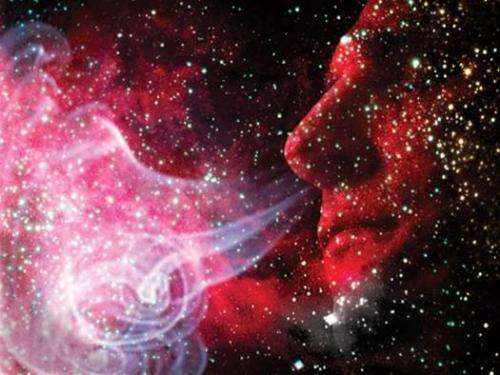November 11, 2014 report
Have you taken the trillion odor challenge?

(Medical Xpress)—Butterscotch can be made by heating brown sugar and butter together according to some predefined proportion. Although one might imagine an infinite variety of butterscotches might be crafted through the addition of extra ingredients like salt, vanilla, cream, honey or even rum, the real question is how many unique flavors or scents might we actually experience? Earlier this year, through successful media engagement, the world was led to believe that the human nose might distinguish between something like a trillion olfactory stimuli. Not only that, but the paper claimed that the olfactory system "far outperforms the other senses in the number of physically different stimuli it can discriminate."
Not so fast says vision scientist Markus Meister; the olfactory bulb might be good, but it is not a million times as good as the retina. His latest installment in this now intensifying battle of the senses was just published to the Arxiv print server. In what might eventually become the go to rejection byline for future papers, Meister simple says "None of this is true." He goes on to show that the methods the original paper used completely misrepresent the dimensionality of the so called space of odor percepts.
In particular Meister asserts that the original paper presumes that the space of odor percepts has 128 dimensions, and that the 128 primary odors used in that study represent "orthogonal" directions within that space. The current consensus is that olfaction is not nearly so high dimensional. Some researchers even offer a dimensionality of just 1 in odor space—for the degree of pleasantness. Vision for example, is often said to be 3-dimensional by virtue of the fact that we have 3 major photopigments for perception. I can only assume here that Meister is ignoring not just those tetrachromats who possess 4 distinct photopigments, but the obvious existence and known spectrum of rhodopsin photopigment absorption. What I think needs to be said in this arrangment of dimishing dimensional returns is that no one really has any idea of how to properly assign dimension to olfaction, or for that matter, much in other sensory systems. A computer screen for example might be assigned extra dimensions (ie. x,y, t, R, G, B) but what does it actually mean to say that red is orthogonal to time?
To see the problem more clearly, take the complex butterscotch micture mentined above. The same smell, or at least a good approximation to it can just as easily be had by mixing together the grapey-pineapply flavor of ethyl butyrate with buttery diacetyl. These two molecules singly have their own scent but apprently generate a new (and largely still unpredictable we might add) percept when mixed together. Perhaps we might even call this an illusory controur for olfaction. The reality is that new percepts are not just continually created out of nothing as new odors or mixtures are perceived for the first time but rather, it seems they would tend to converge on some finite number of primitive forms. This concept has generally been called olfactory white by analogy to the color white which results from the proper mixture of various intensities of different color components or the familiar white noise hiss in audition.
Meister suggests that to get a satisfying answer to the problem what we really want to know is the largest set of stimuli such that every stimulus can be discriminated from every other one, not just from nearest neighbors. Even that would be tough to address experimentally in a system that not only quickly adapts at the receptor level within just a short period of time, but also does so differentially for various kinds of odors. That doesn't even begin to address the slower timescale network adaptions and structural changes that underly any learning in the system that occurs during the duration of the experiment itself.
To compare detection of unique olfactory mixtures—olfactory objects really—with detection in other sensory systems we need to compare apples to apples. In other words, the corresponding percept in other systems of a complex mixture of odorants localized in space and time is not a single wavelength of light or a single note on a scale but rather one selection among a near infinite class of visual or auditory objects. If a spectral element, or perhaps a range of several unique spectral elements can be found to exist for olfaction, then perhaps the field will already has a clear way forward. Failing that, new organizing principles would appear to be desperately needed.
More information: Can Humans Really Discriminate 1 Trillion Odors? arXiv:1411.0165 [q-bio.NC] arxiv.org/abs/1411.0165
Abstract
A recent paper in Science magazine answered this question in the affirmative. The authors reached that conclusion after performing just 260 comparisons of two smells, of which about half could be discriminated. Furthermore the paper claims that the human ability to discriminate smells vastly exceeds our abilities to discriminate colors or musical tones. Here I show that all these claims are wrong by astronomical factors. A reanalysis of the authors' experiments shows they are consistent with humans discriminating just 10 odors. The paper's extravagant claims are based on errors of mathematical logic.
© 2014 Medical Xpress
















